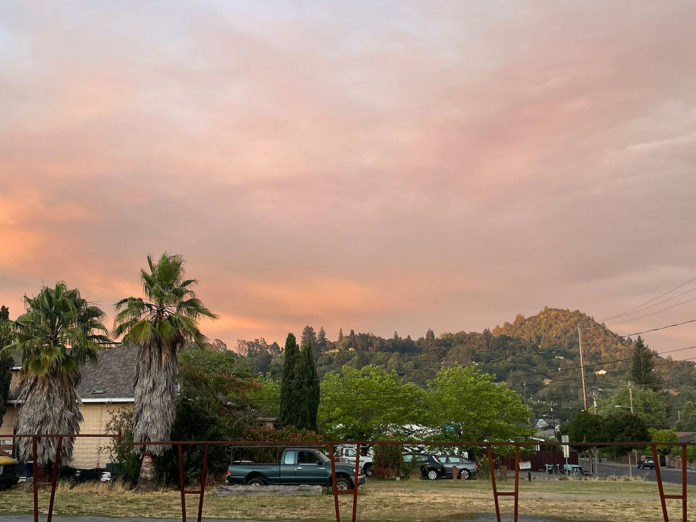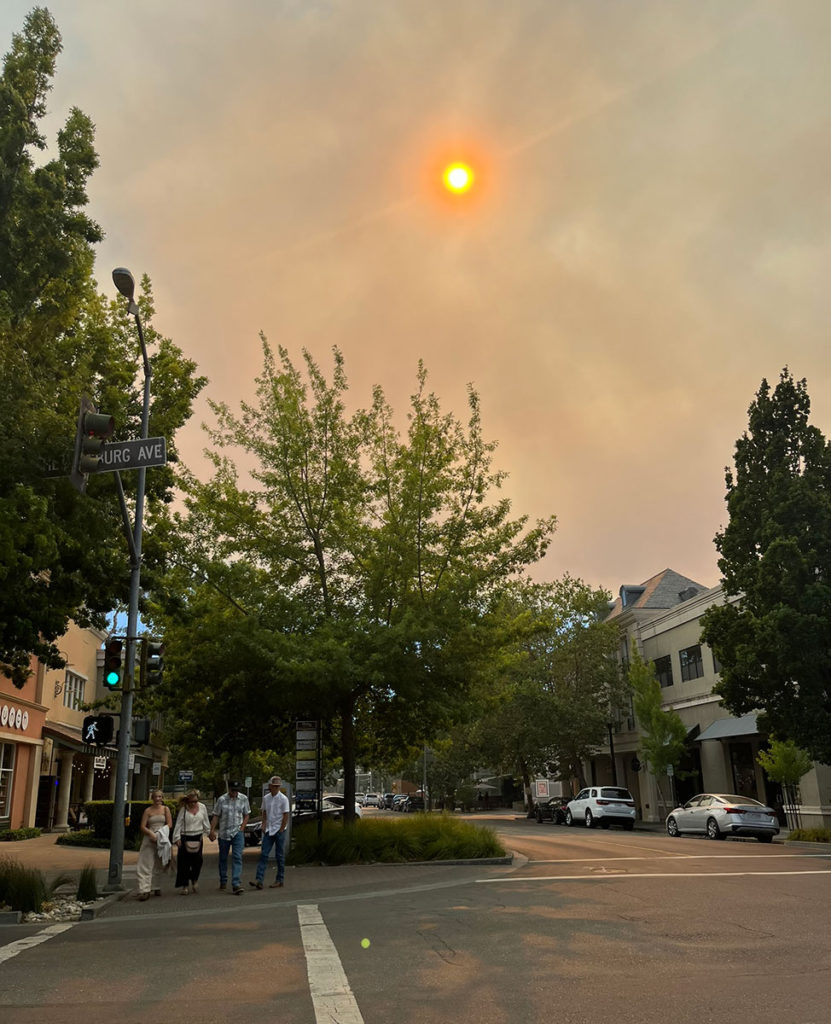
On Tuesday, the office of the Sonoma County Health Officer issued a health advisory as smoky air from the Point Fire near Lake Sonoma continued to cover parts of the county.
“Sonoma County residents are urged to limit outdoor activities in parts of the county with poor air quality caused by wildfire events both in and outside of Sonoma County,” read the advisory from Sheri Cardo, DHS communications specialist.
Such advisories proved common during the summer months of several recent years since 2017, when the Tubbs Fire swept across Sonoma County. This is the first advisory so far in 2024.
Heavy atmospheric smoke is a health risk for everyone, but the health advisory included specific warnings about the adverse health effects: “Members of sensitive groups may experience effects that are more serious. Older adults, pregnant individuals, children and people with heart disease or respiratory illness should avoid prolonged outdoor exertion. Everyone else, especially children, should limit outdoor exertion. Take more breaks during outdoor activities.”
The advisory also encouraged people to check on friends, family and neighbors, especially those at higher risk.
People are advised to stay hydrated by drinking water during heavy smoke events, and avoid adding additional air pollution by curtailing activities such as wood burning, lawn mowing, leaf blowing, driving, barbecuing, smoking or other dust-producing activities.
Such precautions extend even to indoor activities, such as using hairspray and painting indoors. If possible, the advisory suggests, use a stove fan when cooking.
Staying indoors where the air quality is better, with windows and doors closed, is the best way to protect health. During high heat and heavy smoke events, keep indoor air cool. But even if an air conditioner is not used for cooling, an HVAC system can be set to recirculate to keep outside air from moving inside. This applies both to home air conditioning units and car vent systems as well.

Air Quality Index
The AQI or Air Quality Index should be monitored to evaluate local air quality. Many weather apps include an API rating, on a scale of 0 to 500. Good air quality has an AQI reading of up to 50, and moderate or “acceptable” air quality can register up to 100.
Above that, unhealthy readings for sensitive groups run up to 150, and everyone is at risk if the AQI climbs above 151. A “health alert” is called when the AQI is above 200, and emergency health warning conditions apply above 300.
The AQI is based on the amount and type of particulates and pollutants in the air, including gasses such as ozone, carbon dioxide, sulfur dioxide, nitrogen dioxide and even particulate matter.
Some common applications for measuring AQI, many of which can be downloaded to a portable device such as a cell phone, include the following:
- Purple Air: map.purpleair.com
- NSCAPCD: nosocoair.org
- BAAQMD: www.baaqmd.gov
- EPA: www.airnow.gov







